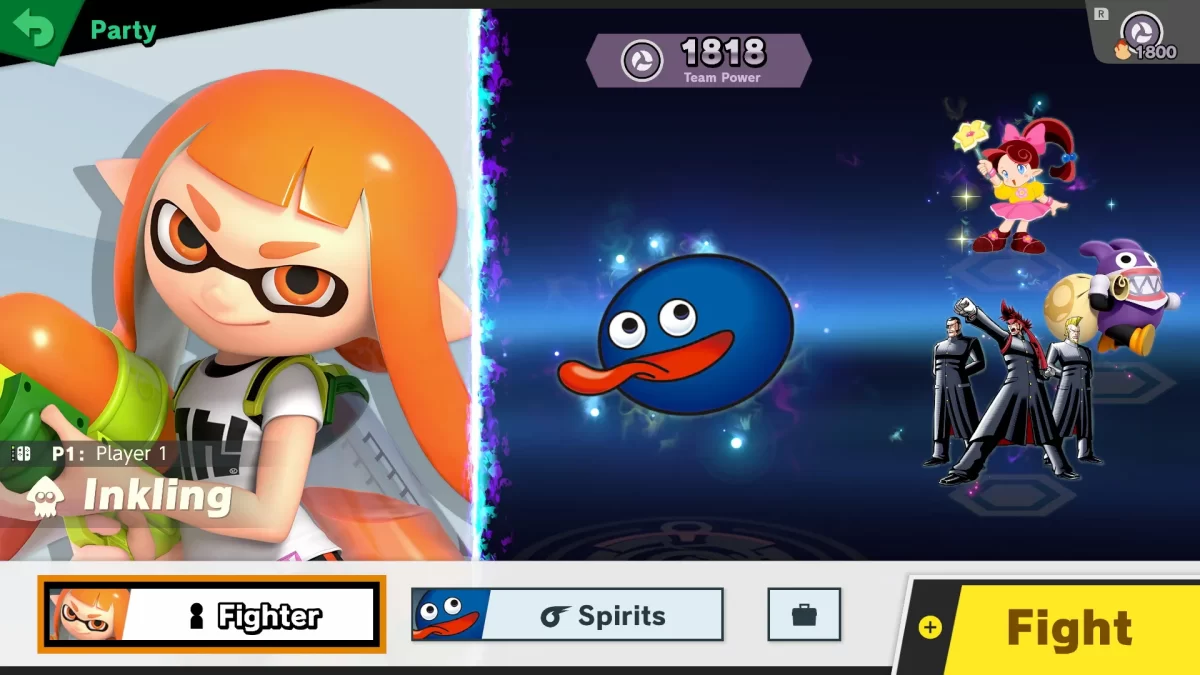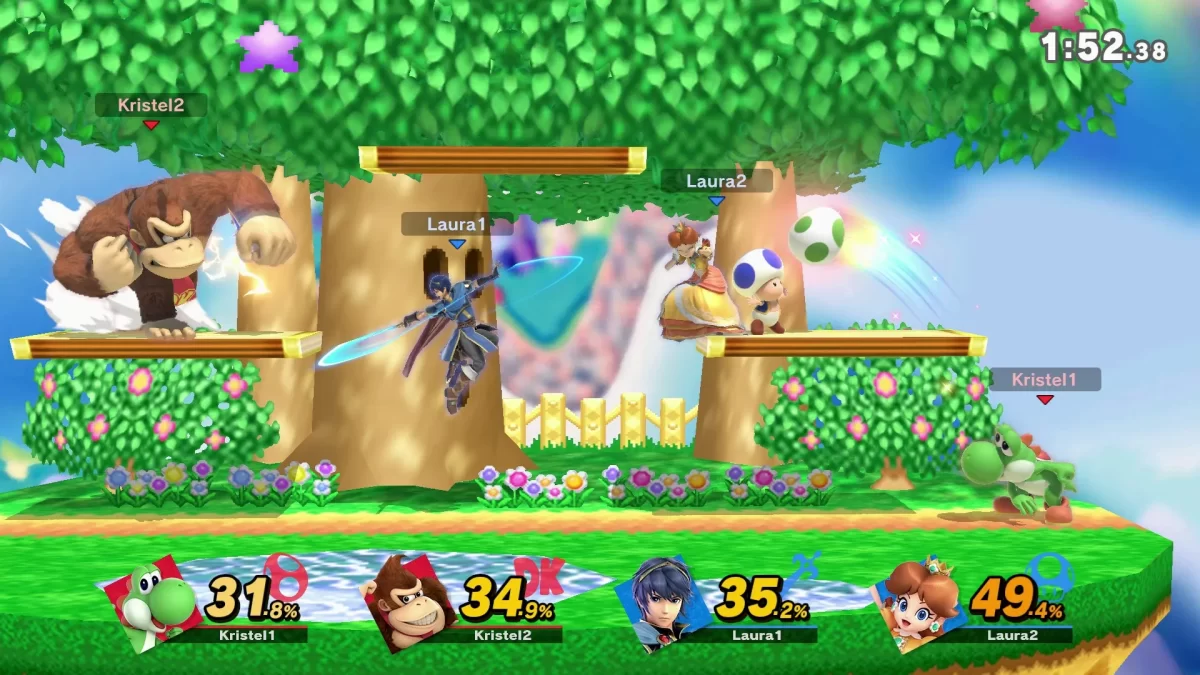
The original Super Smash Bros. was released back in 1999 on the Nintendo 64, and it taught us what happens when beloved Nintendo characters stop being polite and start getting real. The game featured 12 total characters from nine different Nintendo franchises, including Mario, Luigi, Pikachu, Link, and Samus. By contrast, Super Smash Bros. Ultimate features 74 different fighters in the base game, drawing from numerous franchises—not all of which are made by Nintendo. Smash Bros. Ultimate had lofty ambitions all throughout its development, and thankfully it did not disappoint on its release in December 2018.
During development, Super Smash Bros. Ultimate claimed that “EVERYONE IS HERE!,” and the creators were not using that slogan lightly. Included in the 74-character roster is every fighter that has appeared in any previous Smash Bros. installment, regardless of which game and whether it was their only appearance. Everyone from the Ice Climbers and Lucario to Solid Snake and Pichu is back and ready. But they aren’t the only ones brought on board to make Smash Bros. Ultimate the biggest crossover in video-game history. New opponents, such as the Inklings from the Splatoon games, King K. Rool from Donkey Kong, and Simon Belmont from Castlevania are here too. And with so many characters to unlock, you are almost guaranteed a new addition to your roster after every round, adding to the excitement of playing for hours on end.

A new, and welcome, addition to Ultimate are echo fighters. In previous installments, Nintendo had a tendency to add new characters that were essentially reskins of existing fighters in order to pad out the roster. When Ganondorf was added in Super Smash Bros. Melee he was just Captain Falcon in a different body; the same can be said for Lucario being added in Super Smash Bros. Brawl, even though he shared the same moves as Mewtwo from the previous game. This time around Nintendo labeled these fighters as such, not shying away from acknowledging them as carbon copies of existing fighters but also not taking away the excitement of adding long-requested fighters such as Daisy and Chrom to the Smash family.
Much like previous installments in the series, Smash Ultimate is at its best when played in numbers. Fights can take place between up to eight player-controlled or CPU characters with a number of different victory conditions. Whether you’re playing a Stock, Timed, or Stamina contest, the rules for each round can be customized to make sure no two bouts are the same. With 103 different stages to choose from, each of which can be played in Battlefield and Omega variations, sometimes it takes longer to decide where and how to play than it does to actually finish a round.

On the other hand, the game falls a little short when it comes to playing by yourself. All the same co-op game modes are available to play single-handed, but they lack the same excitement that comes with playing them with or against friends. Other modes, such as the returning Classic and new Adventure, are available out of the box but only serve to highlight the necessity of playing together to get the most out of Smash Ultimate.
With a roster this big, it is easy to get caught up in the excitement of having so many characters to choose from, but depending on how competitive you or your friends are, you quickly realize exactly which characters are worth your time and which aren’t. Characters like Olimar or Isabelle may be good for a test drive, but after a few rounds of testing the waters of the 74-plus characters you realize just how small the roster is when you take out all the characters you don’t intend on playing.

While Smash Ultimate already includes more characters than you could imagine, Nintendo is still adding more through DLC, much like it did in Super Smash Bros. for the Wii U, which brought characters such Final Fantasy’s Cloud and Street Fighter’s Ryu. As of now it’s only announced two DLC characters: Piranha Plant from the Mario games and Joker from Persona 5. The latter of the two is a very exciting development, as it shows Nintendo’s commitment to looking outside of its already impressive catalog of first-party IP characters to choose from and making the question of who the next announced DLC character could be a complete mystery. Except for Waluigi, that is—he’s never getting in.
If you’ve played a previous Super Smash Bros. game, you know more or less what to expect out of Ultimate, but that experience is as good as it’s ever been. The year 2018 was a great time to be a Nintendo Switch owner, and Super Smash Bros. Ultimate continues that trend into 2019. Get yourself a few extra controllers and invite the gang over—just don’t get mad when that one friend keeps choosing Little Mac every match.
Super Smash Bros. Ultimate was released on December 7, 2018, exclusively for the Nintendo Switch.

*Originally posted on Twin Cities Geek on January 5th 2019*
